🌿 Nature's Kitchen: 5 Eco-Friendly Design Ideas 🌿
🌿 Nature's Kitchen: 5 Eco-Friendly Design Ideas 🌿

Our kitchens are the heart of our homes, spaces where we gather, cook, and create. But they can also be significant contributors to our environmental footprint. From energy consumption to waste production, the choices we make in our kitchen design can have a lasting impact.
Fortunately, there are numerous ways to create a sustainable kitchen that is both beautiful and eco-conscious. By embracing natural materials, incorporating energy-efficient appliances, and minimizing waste, we can transform our kitchens into havens that are as kind to the environment as they are to our families.
This article explores five key eco-friendly design ideas to help you create a nature-inspired kitchen that’s both functional and sustainable:
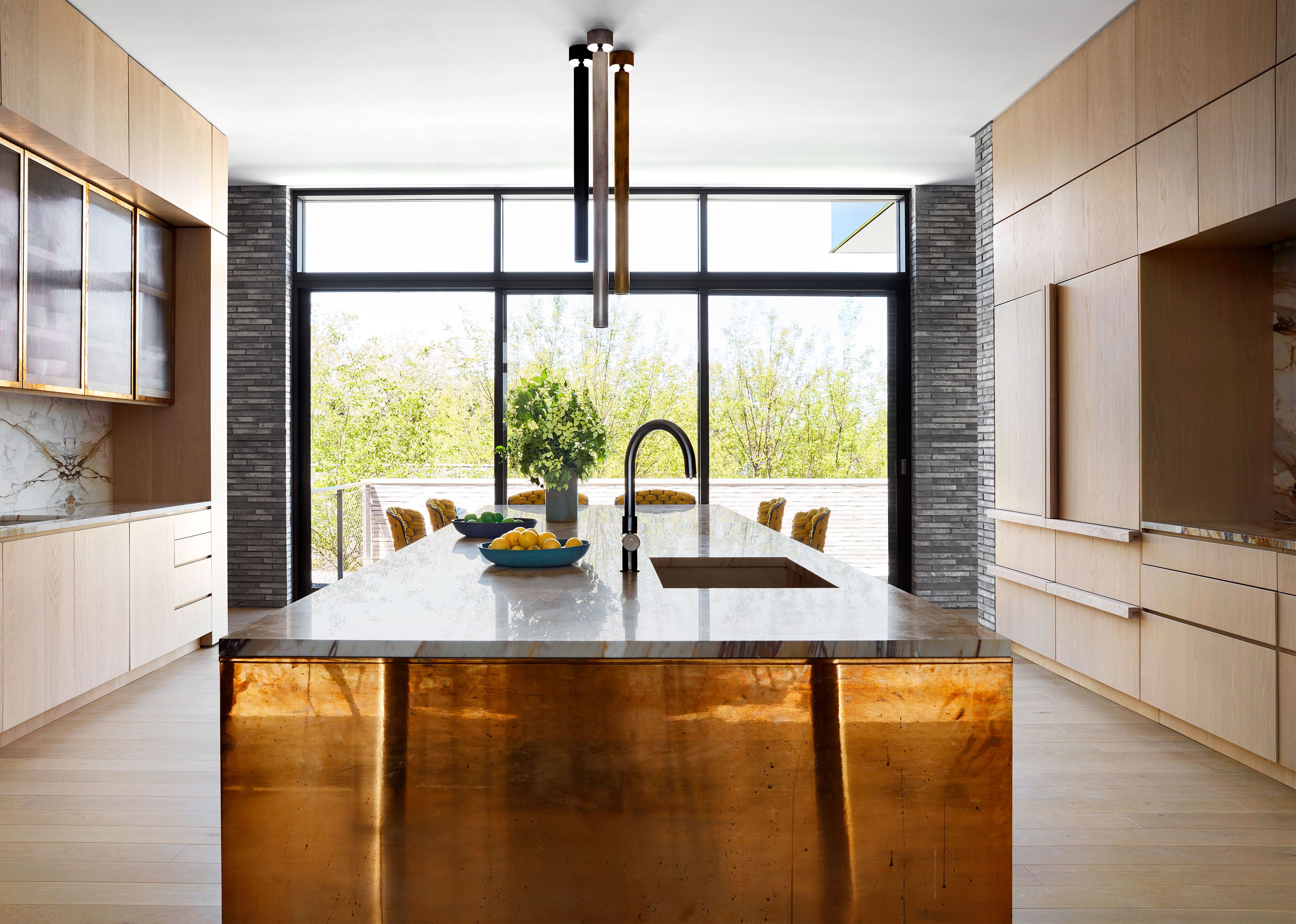
1. Embracing Natural Materials: A Symphony of Sustainability
The first step towards a natural kitchen is to choose materials that align with our environmental values. Sustainable materials not only minimize the environmental impact of production but also offer timeless beauty and durability. Here are some excellent choices for your kitchen:
- Wood: This classic material brings warmth and character to any space. Opt for sustainably harvested woods like bamboo, maple, and oak. They are known for their durability and aesthetic appeal.
- Stone: Natural stone countertops, backsplashes, and flooring add a touch of elegance and sophistication to the kitchen. Choose stones like granite, marble, or soapstone for a timeless, natural look.
- Cork: This renewable resource is an excellent choice for flooring and countertop applications. It’s durable, naturally sound-absorbing, and resistant to water and stains.
- Bamboo: This fast-growing grass is a highly sustainable alternative to traditional hardwoods. It’s lightweight, durable, and can be used for cabinetry, countertops, and flooring.
- Recycled Materials: Give old materials a new life by incorporating recycled glass, metal, or even reclaimed wood into your kitchen design. This practice reduces waste and adds a unique touch to your space.
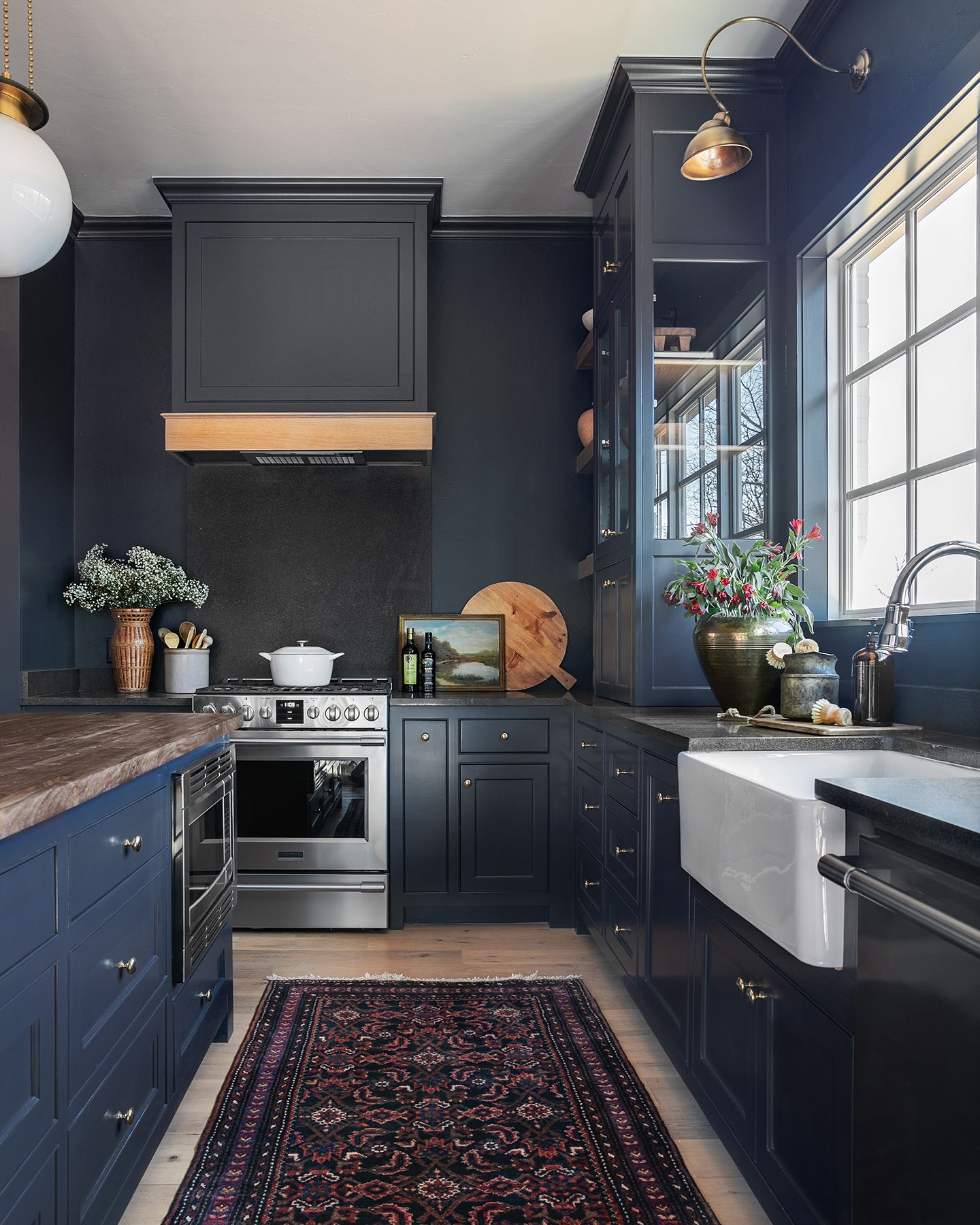
2. Energy-Efficient Appliances: Reducing Your Footprint
The appliances we choose significantly impact our energy consumption. Selecting energy-efficient appliances is crucial for creating a sustainable kitchen.
- Energy Star Certified Appliances: Look for the Energy Star label, which identifies appliances that meet strict energy efficiency standards. These appliances use less energy, leading to lower electricity bills and a reduced carbon footprint.
- Smart Refrigerators: Modern refrigerators with smart features allow you to monitor and adjust energy consumption based on usage patterns. This minimizes energy waste and contributes to a sustainable kitchen.
- Induction Cooktops: These cooktops use electromagnetic energy to heat cookware directly, resulting in faster cooking times and more efficient energy use compared to traditional gas or electric cooktops.
- Dishwashers with Energy-Saving Settings: Modern dishwashers often have energy-saving settings that use less water and electricity. Utilize these settings to optimize energy consumption during dishwashing.
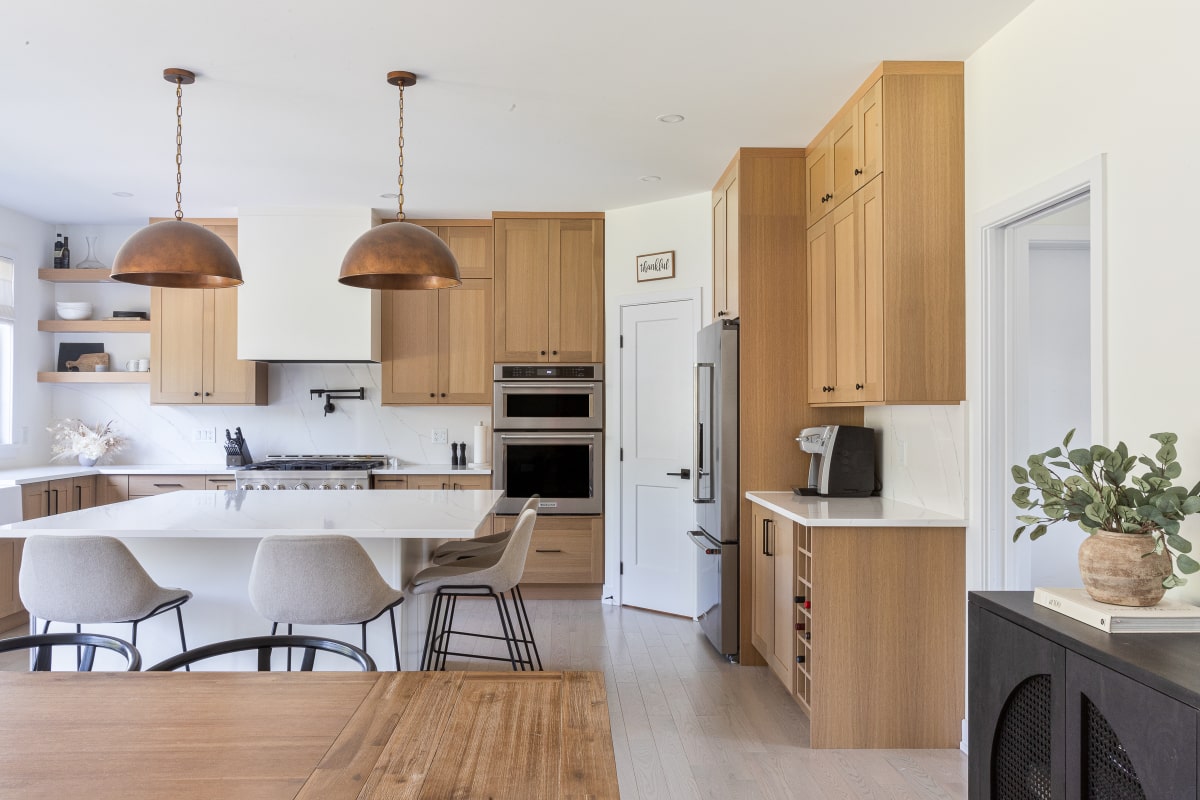
3. Sustainable Lighting: Illuminating the Path to Sustainability
Lighting plays a vital role in creating a welcoming and functional kitchen. However, traditional incandescent bulbs can be energy-intensive. By adopting sustainable lighting solutions, you can significantly reduce your energy consumption and create a more eco-friendly kitchen.
- LED Lighting: LEDs are highly energy-efficient and have a longer lifespan compared to traditional bulbs. They offer excellent brightness and a wide range of color temperatures to suit your kitchen's ambiance.
- Natural Light: Maximize natural light by incorporating large windows and skylights. Not only does natural light reduce energy consumption, but it also creates a more vibrant and spacious feeling in your kitchen.
- Dimmable Switches: Allow you to control the brightness of your lights based on your needs, further reducing energy consumption.

4. Waste Management: Making a Difference One Step at a Time
Our kitchens are often the source of significant waste. But by implementing effective waste management strategies, you can reduce your kitchen’s environmental impact.
- Composting: Start composting food scraps and other organic waste. Composting reduces the amount of waste sent to landfills and provides a valuable soil amendment for your garden.
- Recycling: Properly recycle all recyclable materials like cardboard, paper, glass, and aluminum. Having designated recycling bins in your kitchen makes it easy to separate recyclables from other waste.
- Reusable Products: Invest in reusable containers, bags, and wraps to minimize single-use plastic waste. This simple step can have a significant impact on your environmental footprint.

5. Water Conservation: Preserving This Precious Resource
Water is an essential resource, and our kitchens consume a significant amount of it. By incorporating water-saving techniques, you can significantly reduce water consumption and promote sustainability.
- Low-Flow Faucets: Choose faucets with low-flow aerators that reduce water usage without sacrificing water pressure.
- Water-Efficient Appliances: Look for dishwashers and washing machines that use less water during operation.
- Water-Saving Tips: Implement simple water-saving habits in your kitchen, such as washing fruits and vegetables in a basin instead of running water and using a full dishwasher load instead of washing dishes by hand.

Beyond the Design: Cultivating Sustainable Kitchen Habits
While implementing eco-friendly design elements is crucial, it’s equally essential to cultivate sustainable kitchen habits. These simple yet impactful practices can help you minimize your environmental footprint:
- Grow Your Own Food: Start a small herb garden or a vegetable patch in your kitchen or backyard. Growing your own produce reduces food miles and allows you to enjoy fresh, organic ingredients.
- Reduce Food Waste: Plan your meals carefully to minimize food waste. Use leftovers creatively and store food properly to extend its shelf life.
- Use Reusable Grocery Bags: Say goodbye to plastic bags and embrace reusable shopping bags for your grocery runs.
- Support Local Farmers: Support local farmers by buying fresh produce from farmers' markets or community gardens. This reduces the transportation and storage costs associated with food, contributing to a more sustainable food system.
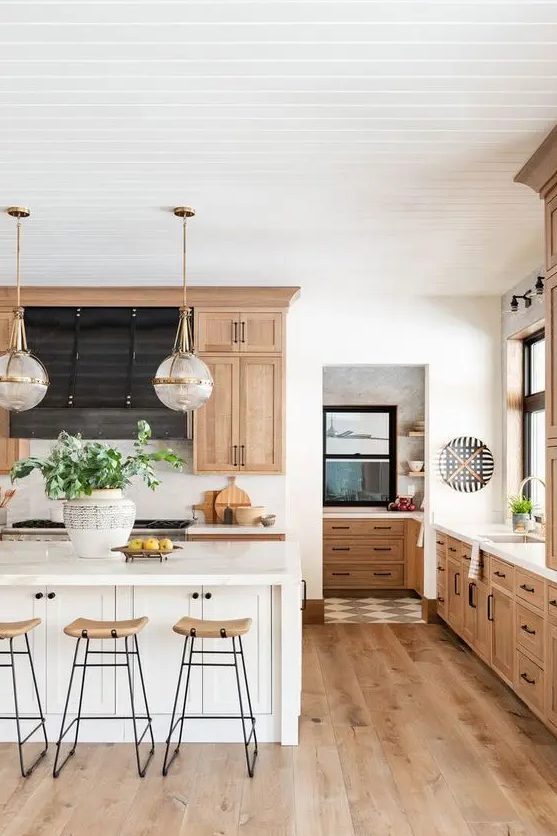
Creating a Sustainable Kitchen: A Journey, Not a Destination
Creating a sustainable kitchen is not about making radical changes overnight. It's about making conscious choices, embracing small but impactful changes, and adopting a mindful approach to kitchen design and practices.
By embracing these five key design ideas and cultivating sustainable habits, you can transform your kitchen into a space that reflects your environmental values and contributes to a healthier planet.
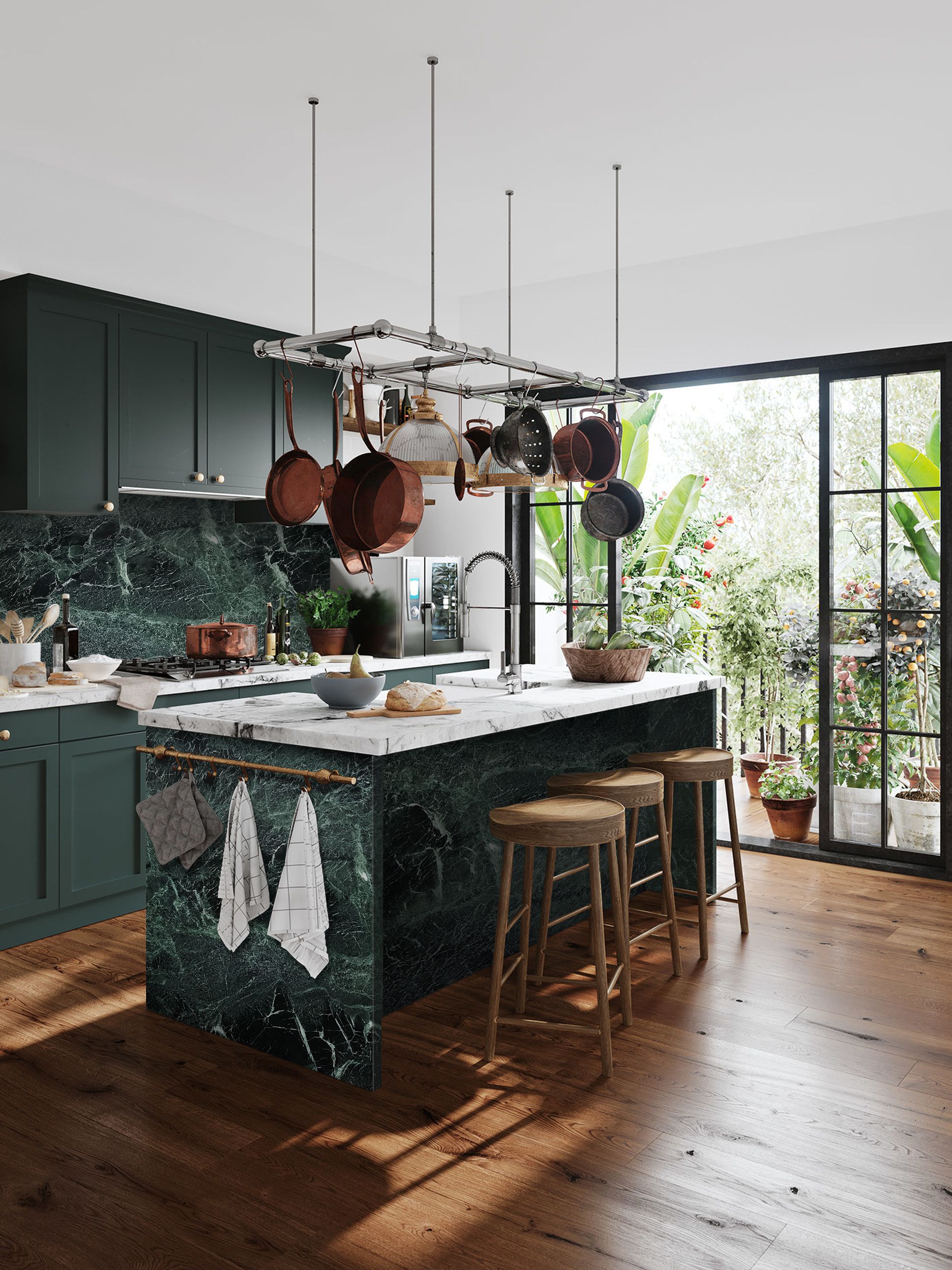

Remember, creating a nature-inspired kitchen is not just about aesthetics; it’s about making a difference in the world, one step at a time.
Green Kitchen Goals: Natural Style You'll Love 🌿

Embracing nature in your kitchen design is more than just a trend – it's a conscious choice towards a healthier, more sustainable lifestyle. The kitchen, often considered the heart of the home, offers a unique opportunity to weave in elements of the natural world, creating a space that nourishes both body and soul. Whether you're embarking on a full-scale renovation or simply seeking subtle touches of green living, this guide will inspire you to create a kitchen that's both beautiful and eco-conscious.
Why a Natural Kitchen?
The allure of natural kitchen design goes beyond aesthetics. It speaks to a growing desire for connection with the Earth, a longing for authenticity, and a commitment to sustainable living. Here's why incorporating natural elements into your kitchen is a worthwhile endeavor:

- Wellness & Well-being: Studies have shown that being surrounded by nature can reduce stress, improve mood, and enhance focus. Bringing the outdoors in can create a calming, restorative atmosphere, making your kitchen a sanctuary for relaxation and mindful living.
- Sustainable Practices: Choosing materials sourced responsibly and prioritizing eco-friendly products aligns with ethical and environmental values. Opting for sustainable kitchen design contributes to a greener footprint and supports responsible practices.
- Timeless Elegance: Natural materials like wood, stone, and bamboo possess inherent beauty and durability, lending a timeless appeal to your kitchen that transcends fleeting trends.
- Increased Value: Sustainable kitchens are increasingly valued by homebuyers, adding to the overall appeal and resale value of your property.
The Foundation: Materials & Finishes
Sustainable materials are the building blocks of a truly green kitchen. Choosing wisely ensures that your kitchen embodies your commitment to environmental consciousness:

- Wood: A classic choice for kitchen cabinetry, countertops, and flooring, wood is a renewable resource. Opt for certified sustainable wood like FSC (Forest Stewardship Council)-certified lumber, ensuring responsible forestry practices.
- Stone: Granite, marble, and quartz are durable and elegant materials that can elevate the look of your kitchen. While natural stone requires some maintenance, it is long-lasting and adds a touch of nature's artistry.
- Bamboo: A rapidly renewable resource, bamboo is a sustainable alternative to wood. It can be used for cabinetry, countertops, flooring, and even furniture, offering a distinct, earthy aesthetic.
- Cork: An eco-friendly and sustainable option, cork is a versatile material for flooring, countertops, and even backsplashes. Its natural warmth and sound-dampening properties create a cozy, inviting atmosphere.
- Recycled Materials: Embrace the power of repurposing! Look for cabinetry and countertops made from recycled materials like reclaimed wood, glass, or metal. These unique pieces can add character and an eco-conscious touch to your kitchen.
The Details: Decor & Accessories
Beyond the structural elements, it's the finishing touches that truly bring your green kitchen goals to life:

- Plants & Greenery: The most straightforward way to infuse your kitchen with nature is through plants. Greenery not only adds vibrancy and visual interest but also purifies the air, creating a healthier and more refreshing environment. Opt for low-maintenance varieties like succulents, herbs, or air plants that thrive in indoor conditions.
- Natural Textiles: Incorporate natural fabrics like linen, cotton, and jute into your kitchen decor. These materials are breathable, durable, and add a touch of rustic charm. Use them for curtains, placemats, table runners, or even for upholstery on kitchen chairs.
- Earthy Color Palette: Embrace a warm and inviting color palette that reflects the natural world. Think shades of green, brown, beige, and terracotta, accented with pops of vibrant hues inspired by nature. For a calming effect, opt for neutral tones like white, cream, and grey.
- Upcycled Treasures: Give new life to vintage or discarded items. A repurposed vintage table can serve as a kitchen island, while antique jars can hold cooking utensils or dried herbs. Embrace the beauty of pre-loved objects and infuse your kitchen with unique charm.
- Sustainable Lighting: Opt for energy-efficient LED lighting and consider incorporating natural light as much as possible. Skylights, large windows, and French doors can brighten your kitchen and reduce your energy footprint.
Going Beyond Aesthetics: Sustainable Practices
A green kitchen isn't just about the look; it's about integrating sustainable practices into your everyday life. Here's how to create a kitchen that's not just beautiful, but also eco-conscious:

- Reduce Food Waste: Compost food scraps, plan meals carefully to avoid overbuying, and use up leftovers creatively. Reducing food waste minimizes your environmental impact and maximizes resource utilization.
- Use Reusable Items: Switch to reusable containers for storing food and eliminate single-use plastics by opting for glass or stainless steel alternatives. Invest in reusable grocery bags and water bottles to reduce waste.
- Conserve Water: Install water-saving fixtures like low-flow faucets and showerheads. When washing dishes, opt for a full dishwasher load rather than running it for smaller quantities.
- Choose Sustainable Cleaning Products: Swap traditional cleaning products for eco-friendly alternatives made from natural ingredients. Many cleaning products can be made at home with ingredients like vinegar, baking soda, and essential oils.
- Support Local & Organic: Whenever possible, source your food from local farmers and choose organic produce to minimize your carbon footprint and support sustainable agriculture.
Green Kitchen Goals: Inspiration & Ideas
Here are some inspiring ideas to incorporate natural elements and sustainable practices into your kitchen:

1. The Rustic Farmhouse:
- Features: Reclaimed wood beams, exposed brick walls, farmhouse sink, open shelving, vintage lighting fixtures, and rustic wooden table.
- Color Palette: Warm brown, beige, and white tones with pops of vibrant green and red.
- Materials: Reclaimed wood, antique brick, cast iron, and woven textiles.
- Sustainable Touches: Vintage furniture, repurposed materials, and locally sourced food.
2. The Modern Minimalist:

- Features: Sleek lines, minimalist cabinetry, open floor plan, integrated appliances, and a focus on functionality.
- Color Palette: Neutral tones like white, grey, and black with accents of green and natural wood.
- Materials: Bamboo, recycled glass countertops, stainless steel appliances, and natural stone backsplashes.
- Sustainable Touches: Energy-efficient appliances, LED lighting, and a focus on reducing waste.
3. The Tropical Retreat:
- Features: Open floor plan, large windows, abundant greenery, rattan furniture, and a focus on natural light.
- Color Palette: Earthy tones like brown, beige, and green with pops of vibrant yellow, orange, and blue.
- Materials: Bamboo, natural stone, rattan, and woven textiles.
- Sustainable Touches: Locally sourced tropical fruits, energy-efficient appliances, and water-saving fixtures.

4. The Mediterranean Oasis:
- Features: Warm, inviting atmosphere, whitewashed walls, terracotta tiles, rustic wood furniture, and an abundance of herbs.
- Color Palette: Warm hues of terracotta, ochre, and olive green with touches of blue and white.
- Materials: Terracotta tiles, natural stone, woven wicker, and linen textiles.
- Sustainable Touches: Fresh herbs grown indoors, locally sourced olive oil and vinegar, and energy-efficient lighting.
Conclusion:


Creating a green kitchen is a journey of mindful design, sustainable choices, and a deep appreciation for the beauty of the natural world. By incorporating natural materials, eco-friendly practices, and thoughtful decor, you can transform your kitchen into a space that nourishes both body and soul. Remember, every small step you take towards a more sustainable kitchen contributes to a healthier planet and a more fulfilling lifestyle.


